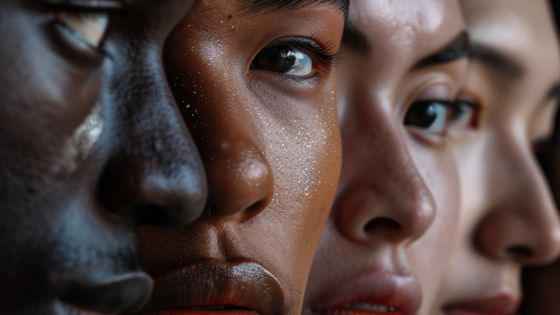on
BY KAHA G.
According to childrenshealthdefense.org, “A 2021 CDC (Centers for Disease Control and Prevention) survey conducted on 17,000 high school teenagers found nearly a third of teen girls said they had seriously considered suicide — up nearly 60% from a decade ago.” This article explores the consequences of social media on teen mental health, highlighting testimonies from experts and advocates calling for urgent change.
The CDC has warned that teen girls face record levels of depression and hopelessness. “High school should be a time for trailblazing, not trauma. These data show our kids need far more support to cope, hope, and thrive,” shared Debra Houry, M.D., M.P.H., CDC’s Chief Medical Officer and Deputy Director for Program and Science. Big tech companies only make things that much worse.
In addition to that, the CDC mentions that 1 in 5 (18%) experienced sexual violence in the past year—up 20% since 2017 when the CDC started monitoring this measure. Also, more than 1 in 10 (14%) had ever been forced to have sex—up 27% since 2019 and the first increase since the CDC began monitoring this measure. Social media shouldn’t be the first thing that teens turn to after a traumatic event like this, in fact, a good chunk of these sexual assault cases is facilitated on social media.
Furthermore, this issue has been taken to Congress, as they are debating whether restricting Big Tech could alleviate this crisis. Several child safety-focused bills to reduce children’s exposure to harmful online interactions are being proposed in this session. The Children’s Health Defense has invited three people who have testified before the Senate Judiciary Committee. The three are: Emma Lembke (a college student and Founder of the LOG OFF movement, which promotes healthy social media use among teens), and Mitch Prinstein (Professor of Psychology and neuroscience and chief science officer at the American Psychological Association). Last but not least, Josh Golin (Executive Director of Fairplay (a Consumer Advocacy Group dedicated to ending marketing targeted at children), and Sean Parker, Facebook’s Founding President (I don’t think he is there anymore due to changes over the years).
Emma Lembke talks about the severe negative impact social media had on her mental and physical health, beginning when she joined platforms like Instagram and YouTube at age 12. The constant need for validation through likes and followers led to heightened anxiety and depression. Emma also described how algorithms recommended harmful content, like pro-anorexia videos, which contributed to her developing disordered eating and a damaged sense of self.
Emma mentioned that it took her three to four years to realize the detrimental effects of social media on her well-being. Even now, she is still working to repair the damage to her body image and mental health. This experience motivated her to start the LOG OFF movement, which aims to protect other young people from similar harm. While Emma acknowledges the positive aspects of social media, she stresses the need for regulation to protect young users from addictive and harmful content.
Mitch Prinstein highlighted the alarming rise in youth mental health issues, particularly cyberbullying and discrimination facilitated through social media. He pointed out that social media platforms expose young people to harmful content, such as encouragement to self-harm or commit suicide. This content often includes explicit instructions on how to harm oneself and even how to hide it from parents. Prinstein emphasized the need for regulation to protect youth from these dangers.
Emma Lembke highlighted the unique position of Gen Z, who, as digital natives, understand the harms present in online spaces. Emma stressed the importance of sharing these experiences to protect future generations. She advocates for a mindful approach to social media use, encouraging young people to reflect on why they use these platforms and how they can protect their well-being online.
Additionally, Josh Golin argued that social media platforms cannot be trusted to self-regulate, especially given that no significant laws have been passed to protect children online since 1998. He criticized platforms for prioritizing profit over safety, highlighting the need for new policies that: protect teens’ privacy, limit data collection, and end targeted advertising to minors. Golin called for a duty of care, where platforms would be legally obligated to consider the design and impact of their algorithms on young users. He also emphasized the need to disrupt the current business model that profits from addicting young people to harmful content.
Finally, Sean Parker, Facebook’s founding president, admitted that the platform was deliberately designed to exploit human psychology by creating a “Social-validation feedback loop.” He explained that Facebook was built to consume as much of users’ time and attention as possible, using features like “likes and comments” to deliver dopamine hits and encourage users to generate more content. Parker acknowledged that this design not only alters how people interact with each other and society, but also likely has detrimental effects on children’s brains, productivity, and overall well-being.
The influence of social media on youth has led to increased rates of anxiety, depression, and self-harm. With platforms prioritizing engagement over mental health, we must address these issues through legislative action and advocacy. The ongoing efforts to reform social media policies highlight the potential for positive change. As we work towards creating safer online environments, teens need to reflect on their social media use and seek support. Immediate action is needed to protect and support the well-being of the next generations and take care of our current ones.
Stay in the loop with exclusive news, stories, and insights—delivered straight to your inbox. No fluff, just real content that matters. Sign up today!













